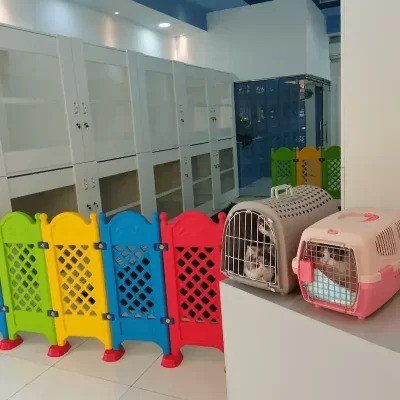
Attention Deficit Hyperactivity Disorder (ADHD) is often misunderstood and stigmatized, with many perceiving it solely as a disruptive condition marked by inattentiveness, hyperactivity, and impulsiveness. However, ADHD is a multifaceted neurodevelopmental disorder that affects individuals differently, sometimes manifesting as an asset, particularly in the realm of creativity and artistic expression. This essay explores the relationship between ADHD management and artistic genius, debunking common misconceptions and highlighting the unique strengths that individuals with ADHD bring to the artistic community.
Understanding ADHD: Beyond the Stereotypes
ADHD is characterized by persistent patterns of inattention and/or hyperactivity-impulsivity that interfere with functioning or development. The condition can be categorized into three types: predominantly inattentive presentation, predominantly hyperactive-impulsive presentation, and combined presentation. Symptoms often appear in early childhood and can continue into adulthood, affecting various aspects of life including academic performance, employment, and interpersonal relationships.
Despite its challenges, ADHD is not solely a deficit or disorder. Many individuals with ADHD exhibit exceptional creativity, problem-solving skills, and out-of-the-box thinking. These attributes are not mere compensations for their difficulties but intrinsic parts of their cognitive profile. The hyperfocus that people with ADHD can experience, often seen as a deficit in regulating attention, can actually facilitate deep immersion and extraordinary productivity in areas of interest, including artistic endeavors.
The Intersection of ADHD and Creativity
The connection between ADHD and creativity is well-documented. Creativity involves divergent thinking, which is the ability to generate multiple, unique solutions to a problem. This type of thinking contrasts with convergent thinking, which focuses on finding a single, correct solution. Individuals with ADHD often excel in divergent thinking, a crucial element of creativity.
Research suggests that the brains of people with ADHD function differently, with variations in dopamine regulation and neural connectivity. These differences can lead to unconventional thought processes and heightened creative abilities. Studies have shown that individuals with ADHD are more likely to engage in creative professions and pursuits, from the visual arts to music, literature, and beyond.
Historical and Contemporary Examples
History and contemporary culture are replete with examples of individuals who have harnessed their ADHD-related traits to achieve artistic greatness. While it is challenging to diagnose historical figures with ADHD retrospectively, many prominent artists, musicians, and writers exhibit characteristics associated with the disorder.
Leonardo da Vinci, the quintessential Renaissance man, is often cited as a possible example of a historical figure with ADHD. His notebooks reveal a mind that darted between numerous projects and interests, displaying both the curiosity and the difficulty in maintaining focus on a single task that typify ADHD.
In modern times, David Neeleman, the founder of JetBlue Airways, has openly discussed his ADHD and credits it for his innovative thinking and success. Neeleman has also highlighted how ADHD can enhance creativity and problem-solving abilities, despite posing significant challenges in other areas.
Justin Timberlake, a world-renowned musician and actor, has also spoken about his ADHD and its impact on his career. Timberlake’s ability to excel in multiple creative fields—music, acting, and entrepreneurship—illustrates the diverse talents and relentless energy that individuals with ADHD often possess.
Breaking the Stigma: Embracing Neurodiversity
The stigma surrounding ADHD often stems from a lack of understanding and an overemphasis on its negative aspects. Society tends to view neurotypical functioning as the standard, marginalizing those who deviate from this norm. However, the concept of neurodiversity, which recognizes and values the natural variations in human cognition, offers a more inclusive perspective.
Embracing neurodiversity involves recognizing the strengths and contributions of individuals with ADHD rather than focusing solely on their difficulties. In the context of the arts, this means acknowledging that ADHD can be a source of unique creativity and innovation. It requires challenging stereotypes and educating the public about the positive aspects of ADHD.
Strategies for Supporting Artistic Talents
To harness the potential of individuals with ADHD in the arts, it is crucial to provide supportive environments that cater to their unique needs. Here are some strategies:
- Flexible Structures: Artistic environments should offer flexible structures that allow individuals to work in ways that suit their cognitive styles. This can include varied workspaces, flexible deadlines, and the freedom to pursue multiple projects simultaneously.
- Positive Reinforcement: Encouraging and acknowledging the strengths and achievements of individuals with ADHD can boost their self-esteem and motivation. Positive reinforcement helps counteract the negative feedback they often receive due to their challenges.
- Collaboration and Mentorship: Pairing individuals with ADHD with mentors or collaborators who understand and appreciate their creative process can be beneficial. Mentorship provides guidance and helps channel their energy productively.
- Accessible Resources: Providing access to resources such as time management tools, organizational aids, and professional development opportunities can help individuals with ADHD navigate their challenges and maximize their creative potential.
Personal Stories: Voices of Artistic Genius
Personal stories from individuals with ADHD highlight the diverse ways in which the condition can intersect with artistic talent. For instance, Tim Burton, the acclaimed filmmaker known for his unique and imaginative style, has spoken about his struggles with focus and attention during his school years. Burton’s unconventional approach to storytelling and visual arts exemplifies how ADHD can fuel artistic innovation.
Similarly, Solange Knowles, a talented musician and artist, has discussed her experiences with ADHD. Knowles’ eclectic and boundary-pushing work in music and visual art reflects the diverse creative capacities often found in individuals with ADHD. Her willingness to speak openly about her condition helps reduce stigma and encourages others to embrace their neurodiversity.
Conclusion: A Paradigm Shift in Perception
Overcoming the stigma associated with ADHD requires a paradigm shift in how society perceives and values neurodiversity. Recognizing the strengths and creative potential of individuals with ADHD is a crucial step toward fostering an inclusive environment where diverse cognitive profiles are celebrated.
The artistic genius often found in individuals with ADHD medicine underscores the importance of viewing ADHD not merely as a disorder but as a different way of thinking and processing the world. By supporting and nurturing the talents of those with ADHD, society can benefit from the unique and innovative contributions they bring to the arts and beyond.
In conclusion, the relationship between ADHD and artistic genius is a testament to the power of neurodiversity. By challenging stigmas and embracing the full spectrum of human creativity, we can create a world that values and nurtures the talents of all individuals, regardless of their neurological makeup. This inclusive approach not only benefits those with ADHD but enriches the cultural and creative landscape for everyone.
RELATED POSTS
View all


